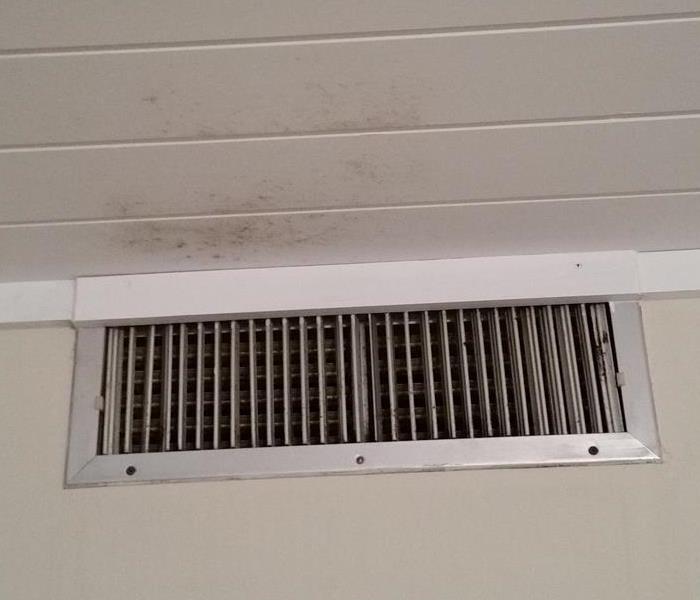Mold Causes and Conditions
8/21/2015 (Permalink)
Causes and Conditions
Mold is everywhere, and can grow on almost any surface when moisture is present. They reproduce because of mold spores, which are carried by air currents, in many ways like a flower pollenating. When spores land on a moist surface suitable for life, they begin to grow. Mold is commonly found indoors at levels which do not affect most healthy individuals.
Because normal building materials are capable of supporting mold growth and mold spores are everywhere, mold growth in an indoor environment is usually related to water or moisture and may be caused by incomplete drying of flooring materials (such as concrete). Flooding, broken water lines, appliance malfunctions, leaky roofs, building-maintenance or indoor-plumbing problems can lead to interior mold growth. Moisture commonly condenses on surfaces cooler than the moisture-laden air, enabling mold to thrive. This moisture vapor passes through walls and ceilings. Floors over crawl spaces and basements, without vapor barriers or with dirt floors, are mold-prone.
Significant mold growth needs moisture and food sources and a surface capable of supporting growth. Common building materials, such as plywood, drywall, carpets, and carpet padding provide the food mold needs. In the carpet, invisible dust and cellulose are food sources. After water damage to a building has occurred, mold grows in walls and then becomes dormant until subsequent high humidity; suitable conditions reactivate mold.
Most molds are commonly detectable by smell and evidence of water damage on walls or ceilings, and can grow in places invisible to the naked eye. It can sometimes be found behind wallpaper or paneling, on the backside of ceiling tiles, the back of drywall, or underneath carpets or carpet padding. Piping in walls can also be a source of mold, since they may leak and condensate.
As stated above, mold spores need three things to grow:
· Nutrients: Cellulose and dust are a common food for indoor spores.
· Moisture: Needed to begin the decaying process caused by mold
· Time: Mold growth begins anywhere from 24 hours to 10 days after the provision of growing conditions.
When mold colonies grow inside buildings the main health concern is the inhalation of mycotoxins. After a flood or water leak, mycotoxin levels are much higher even after a building has dried out.
Common food sources for mold in buildings can be cellulose-based materials such as wood, cardboard and the paper facing on drywall and organic matter such as soap, fabrics and dust-containing skin cells. If a house has mold, the moisture may originate in the basement or crawl space, a leaking roof or a leak in plumbing pipes. Insufficient ventilation may accelerate moisture buildup. Visible mold colonies may form where ventilation is poorest and on perimeter walls (because they are nearest the dew point).
HVAC systems can most definitely produce all three requirements for mold growth. The air conditioning system creates a difference in temperature, encouraging condensation which is why a condensation line is needed on the air handler. The high rate of dusty air movement through an HVAC system may supply plenty food for mold. Since the air-conditioning system is not always running, warm conditions are the final component for mold growth. The situation only becomes worse now because spores become airborne and are distributed throughout the house through the vents.
Removing one of the three requirements for mold reduces (or eliminates) new mold growth. Eliminate moisture, food and warmth and this will stop the growth but now you have to remediate what you have and that’s a whole other post.





 24/7 Emergency Service
24/7 Emergency Service
